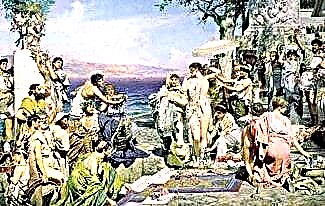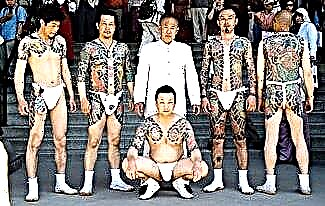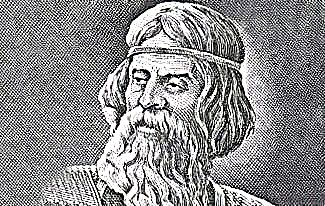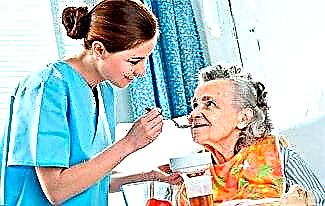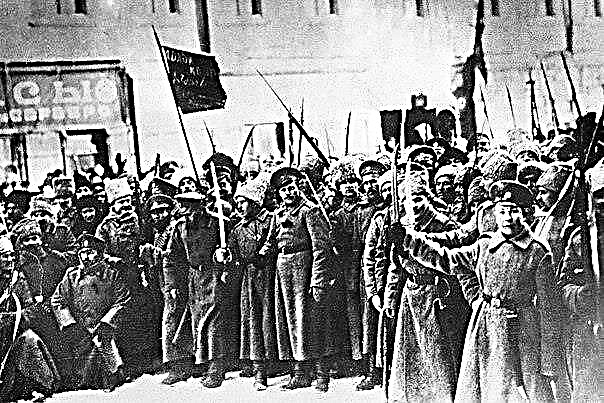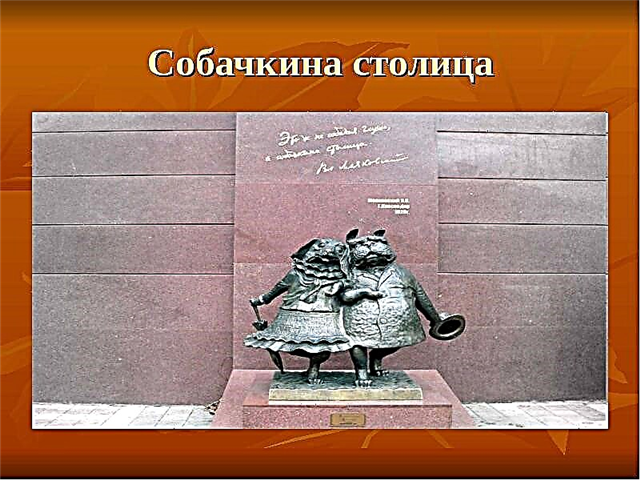
1. Losses after the war of the Wehrmacht amounted to about six million people. According to statistics, the ratio of the total number of dead to dead people between the USSR and Germany is 7.3: 1. From this we conclude that more than 43 million people died in the USSR. These figures take into account the losses of civilians: the USSR - 16.9 million people, Germany - 2 million people. More details in the table below.

Losses of the USSR and Germany after the end of World War II
2. Not everyone knows that after the war in the Soviet Union the Victory Day holiday was not celebrated for seventeen years.
3. From the forty-eighth year, the Victory Day holiday was considered the most important holiday, but no one ever celebrated it, it was considered an ordinary day.
4. The day off was the first of January, but from the thirtieth year it was canceled.
5. People have drunk five million six hundred ninety-one liters of vodka in just one month (December 1942).
6. The first time Victory Day was celebrated extensively only after two decades in 1965. After that, Victory Day became a non-working day.
7. After the war, only 127 million inhabitants remained in the USSR.
8. Today Russia has forty-three million Soviet citizens killed during the Great Patriotic War.
9. Now some sources hide the cancellation of the Victory Day holiday: they fear that the Soviet government is afraid of active and independent veterans.
10. According to official data, it was ordered: to forget about the Great Patriotic War and make every effort to restore the destroyed buildings by human labor.
11. For a decade after the Victory, the USSR was formally still at war with Germany. After the acceptance of the surrender by the Germans, the USSR decided not to accept or sign peace with the enemy; and it turns out that he remained at war with Germany.
12. On January 25, 1955, the Presidium of the Supreme Soviet of the USSR issues a decree "On ending the state of war between the Soviet Union and Germany." This decree formally ends the war with Germany.
13. The first victory parade took place in Moscow on June 24, 1945.
14. The siege of Leningrad (now St. Petersburg) lasted 872 days from 09/08/1941 to 01/27/1944.
15. It is hard to believe, but the authorities of the USSR did not want to keep counting those killed during the hostilities.
16. After the end of the war, Stalin took an approximate figure of seven million.
17. Westerners did not believe that seven million people died and began to deny this fact.
18. After Stalin's death, the death toll was not revised.
19. Not only men, but also women fought during the Great Patriotic War.
20. As the statistics of the Great Patriotic War showed, eighty thousand Soviet officers were women.

Greeting Russian soldiers by American
21. As Secretary General Khrushchev said, after the debunking of Stalin's "personality cult", there were already more than twenty million people who died.
22. Real calculations of the perished population began only at the end of the eightieth year.
23. Until now, the question of the actual number of deaths remains open. On the territories of the belligerent states, mass graves and other graves are found.
24. Official data on the death toll are as follows: from 1939-1945. killed forty-three million four hundred and forty-eight people.
25. The total death toll is from 1941-1945. twenty six million people.
26. Approximately 1.8 million people died as prisoners or immigrated during the Great Patriotic War.
27. According to Boris Sokolov, the ratio of the losses of the Red Army and the Eastern Front (Verkhmaht) is ten to one.
28. Unfortunately, the question of the death toll remains open to this day, and no one will answer it.
29. In general, from six hundred thousand to one million women fought at the front at different times.
30. During the Great Patriotic War, women's formations were formed.
31. The Baku factories produced shells for "Katyushas".
32. In general, the enterprises of Azerbaijan for military needs during the Great Patriotic War spent and processed seventy-five tons of oil products and oil.
33. During the fundraising period for the creation of tank columns and air squadrons, a ninety-year-old collective farmer donated thirty thousand rubles.
34. Among the howling women, three regiments were formed, and they were called "night witches".
35. On the morning of May 2, 1945, fighters Mamedov, Berezhnaya Akhmedzade, Andreev, led by Lieutenant Medzhidov, hoisted the banner of victory over the Brandenburg Gate.
36. Three hundred and thirty-four settlements that were in Ukraine were completely burned down by the Germans along with the people.
37. The largest city that was captured by the exterminators was the city of Koryukovka in the Chernihiv region.
38. In just two days, 1,290 houses were burned in the largest captured city, only ten remained intact and seven thousand civilians were killed.
39. During the Great Patriotic War, volunteer brigades and even reserve rifle regiments of women were created.
40. Women snipers were trained by a special central sniper school.
41. A separate company of seafarers was also created.
42. It's very hard to believe, but women sometimes fought better than men.
43. Eighty-seven women received the title of Hero of the Soviet Union.
44. At all stages of the war, the failed and the victorious drank alcohol equally and in large quantities.
45. More than four hundred people performed a feat that is similar to the "sailor".
46. The medal "For the capture of Berlin" was awarded to about 1.1 million soldiers
47. Some saboteurs derailed dozens of enemy echelons.
48. More than three hundred items of enemy equipment were destroyed by tank destroyers.
49. Not all fighters were entitled to vodka. From the forty-first year, the main supplier suggested setting the parameters. To issue vodka in the amount of one hundred grams per person per day to the Red Army and the commanders of the active army.
50. Stalin also added that if you want to drink vodka, then you have to go to the front, and not sit in the rear.
51. We didn’t have time to issue medals and orders and that is why not everyone got them.
52. During the war, more than one hundred and thirty types of ammunition and weapons were produced.
53. After the end of the war, the personnel department began active work regarding the search for the awardees.
54. By the end of 1956, approximately one million awards had been issued.
55. In the fifty-seventh year, the search for the awarded people was interrupted.
56. Medals were handed out only after a personal appeal from citizens.
57. Many awards and medals have not been awarded, because many veterans have died.
58. Alexander Pankratov was the first to enter the embrasure. Junior political instructor of a tank company of the 125th tank regiment of the 28th tank division.
59. More than sixty thousand dogs served in the war.
60. Dogs-signalers delivered about two hundred thousand war reports.
61. During the war, medical orderlies took out from the battlefield about seven hundred thousand seriously wounded commanders and Red Army soldiers. The orderly and porter were awarded the title of Hero of the Soviet Union for removing 100 wounded from the battlefield.
62. Sapper dogs have cleared more than three hundred large cities
63. On the battlefield dog-orderlies crawled up to the wounded soldier on their bellies and offered him a medical bag. We waited patiently for the soldier to bandage the wound and crawled to the other soldier. Also, dogs were good at distinguishing a living soldier from a dead one. After all, many of the wounded were unconscious. These soldiers were licked by the dogs until they woke up.
64. Dogs defused more than four million landmines and enemy mines.
65. In 1941, on August 24, Pankratov covered an enemy machine gun with his body. This made it possible for the Red Army to occupy a foothold without a single loss.
66. After the feat accomplished by Pankratov, fifty-eight more people did the same.
67. From personal savings, people transferred fifteen kilograms of gold, nine hundred and fifty-two kilograms of silver and three hundred and twenty million rubles for military needs.
68. During the war, more than one million items of essential goods and one hundred and twenty-five wagons of warm clothing were sent.
69. Baku enterprises took an active part in the restoration of the Dnieper Hydroelectric Power Station, the port of Azov and other important facilities.
70. Until the summer of 1942, Baku enterprises dispatched and collected two wagons of pressed caviar, dried fruits, juice, puree, hematogen, gelatin and other food products to Leningrad.
71. Much assistance was provided by medicines, money and equipment to the Krasnodar Territory, Stalingrad, and the Stavropol Territory.
72. From December 1942, the German newspaper Rech began to appear in Russian once a week.
73. Leaflets, posters, brochures were distributed among the people, which called on people to restore their homeland.
74. Almost all war correspondents were awarded orders and received the title of Hero of the Soviet Union.
75. The most active female sniper was well known in the United States and the song "Miss Pavlichenko" was written about her by Woody Guthrie.

Residents of the Soviet village greet German soldiers with a tricolor flag.
USSR, 1941.
76. In the summer of 1941, it was decided to disguise the Kremlin from enemy bombing. The camouflage plan provided for repainting the roofs, facades and walls of the Kremlin buildings in such a way that from a height it seemed that they were city blocks. And it succeeded.
77. Manezhnaya Square and Red Square were filled with plywood decorations.
78. Borzenko personally participated in repelling the enemy.
79. Even in spite of the difficult conditions of the landing, Borzenko carried out his direct duty as a correspondent.
80. All of Borzenko's work exhaustively informed about the situation in the landing.
81. In 1943, the Church and the Patriarchate were fully restored in the USSR.
82. After the war, Stalin announced that he needed advice on the affairs of the Russian Orthodox Church.
83. Many women volunteers took part in the Great Patriotic War.
84. During the war the Germans produced the unique P.08 pistols designed by Georg Luger.
85. The Germans made individual weapons by hand.
86. During the war, German sailors took a cat on board the battleship.
87. The battleship ship was sunk, only one hundred and fifteen people out of the 2,200 crew were saved.
88. The drug pervitin (methamphetamine) was widely used to stimulate German soldiers.
89. The drug was officially added to the rations for tankers and pilots.
90. Hitler considered his enemy not Stalin, but the announcer Yuri Levitan.
- Soldiers examine the couch where Adolf Hitler shot himself. Berlin 1945
91. The Soviet authorities actively guarded Levitan.
92. For the head of the announcer Levitan, Hitler announced a reward in the amount of 250 thousand marks.
93. Levitan's messages and reports were never recorded.
94. In 1950, a special record was officially created for history only.
95. Initially, the term "Bazooka" was a musical wind instrument that closely resembles a trombone.
96. At the beginning of the war, the German Coca-Cola factory lost supplies from the United States.
97. After the supply stopped, the Germans began to produce the drink "Fanta".
98. According to historical data, about four hundred thousand policemen came to the service during the war.
99. Many police officers began to defect to the partisans.
100. By 1944, crossovers to the side of the enemy became widespread, and those who went over remained loyal to the Germans.

